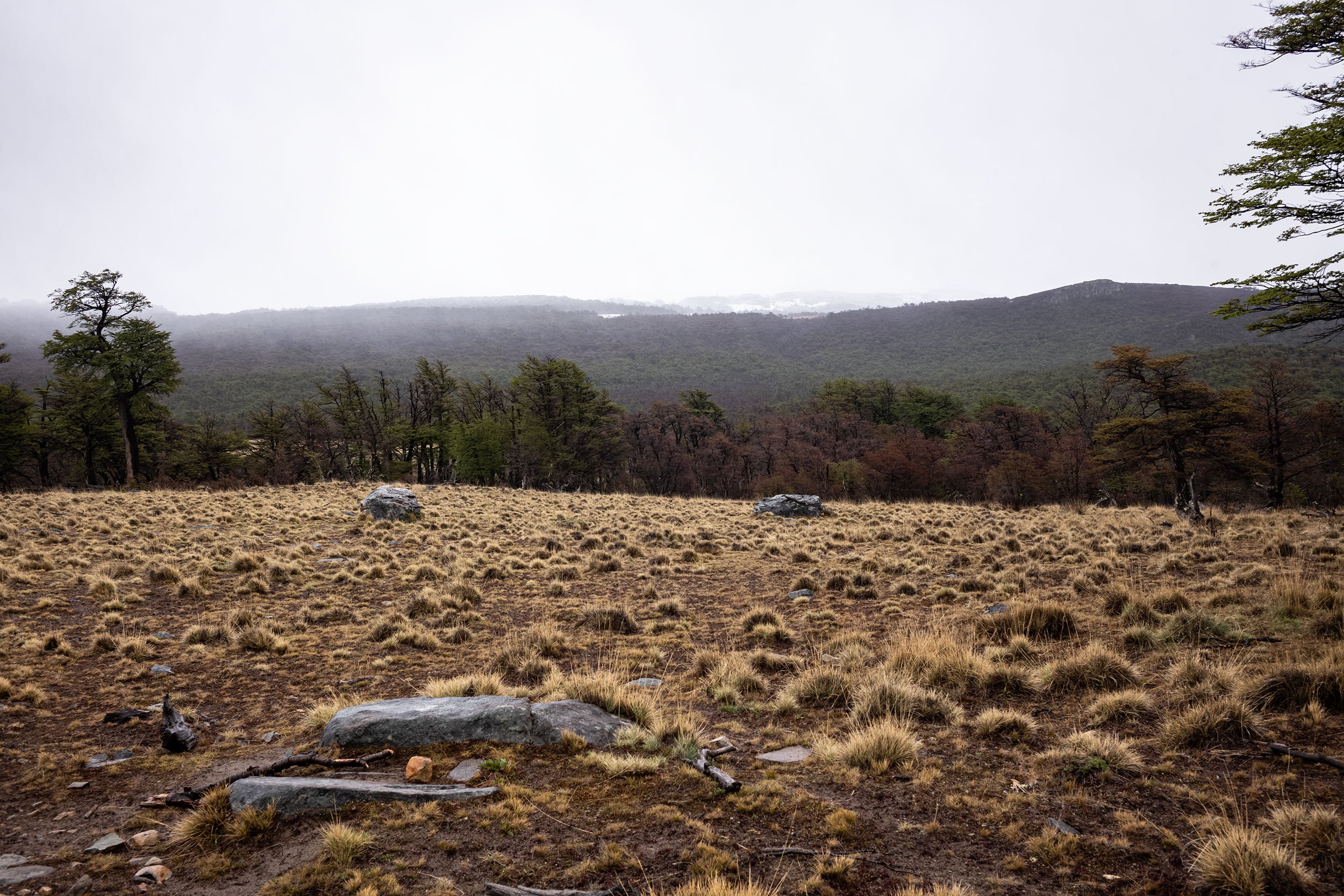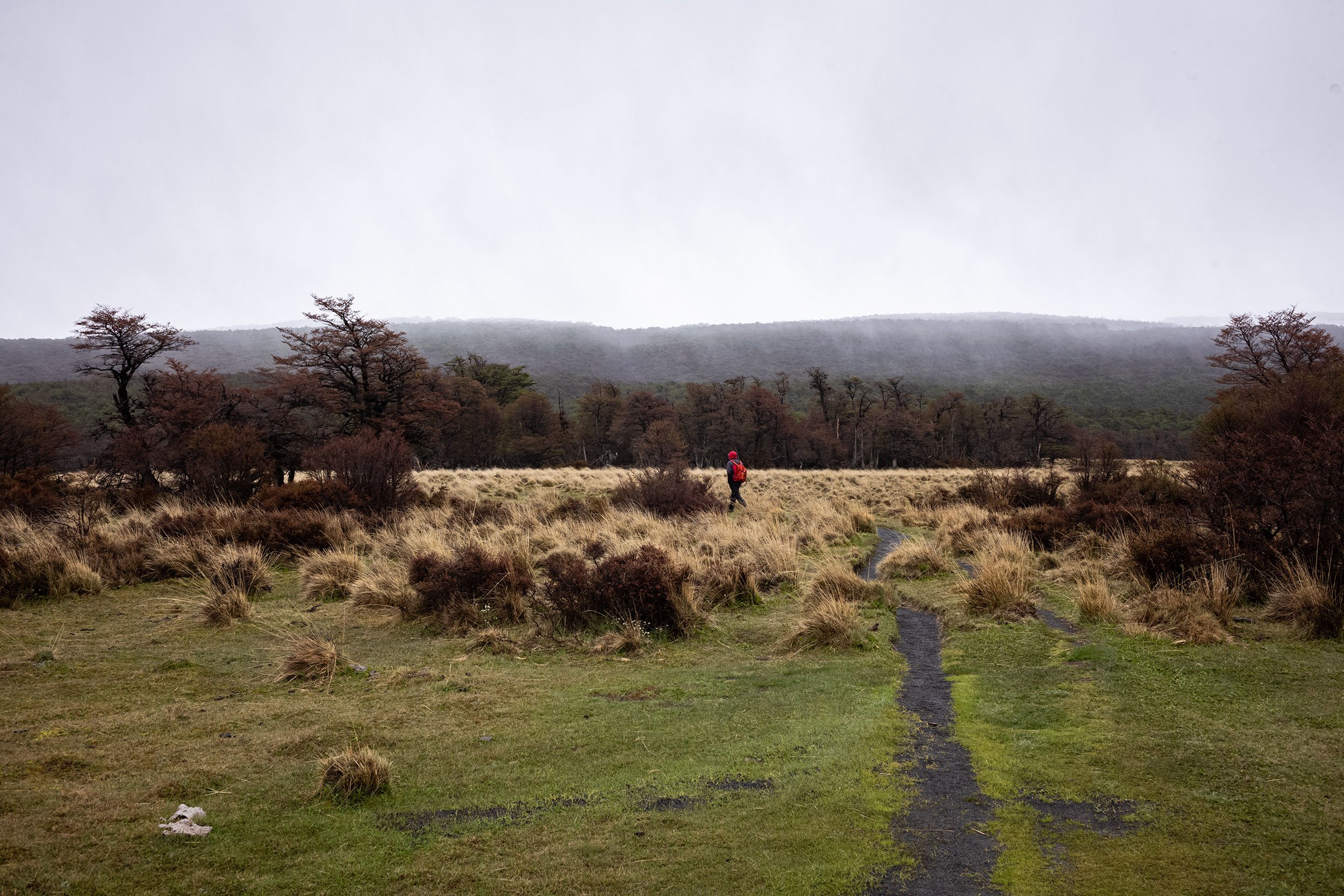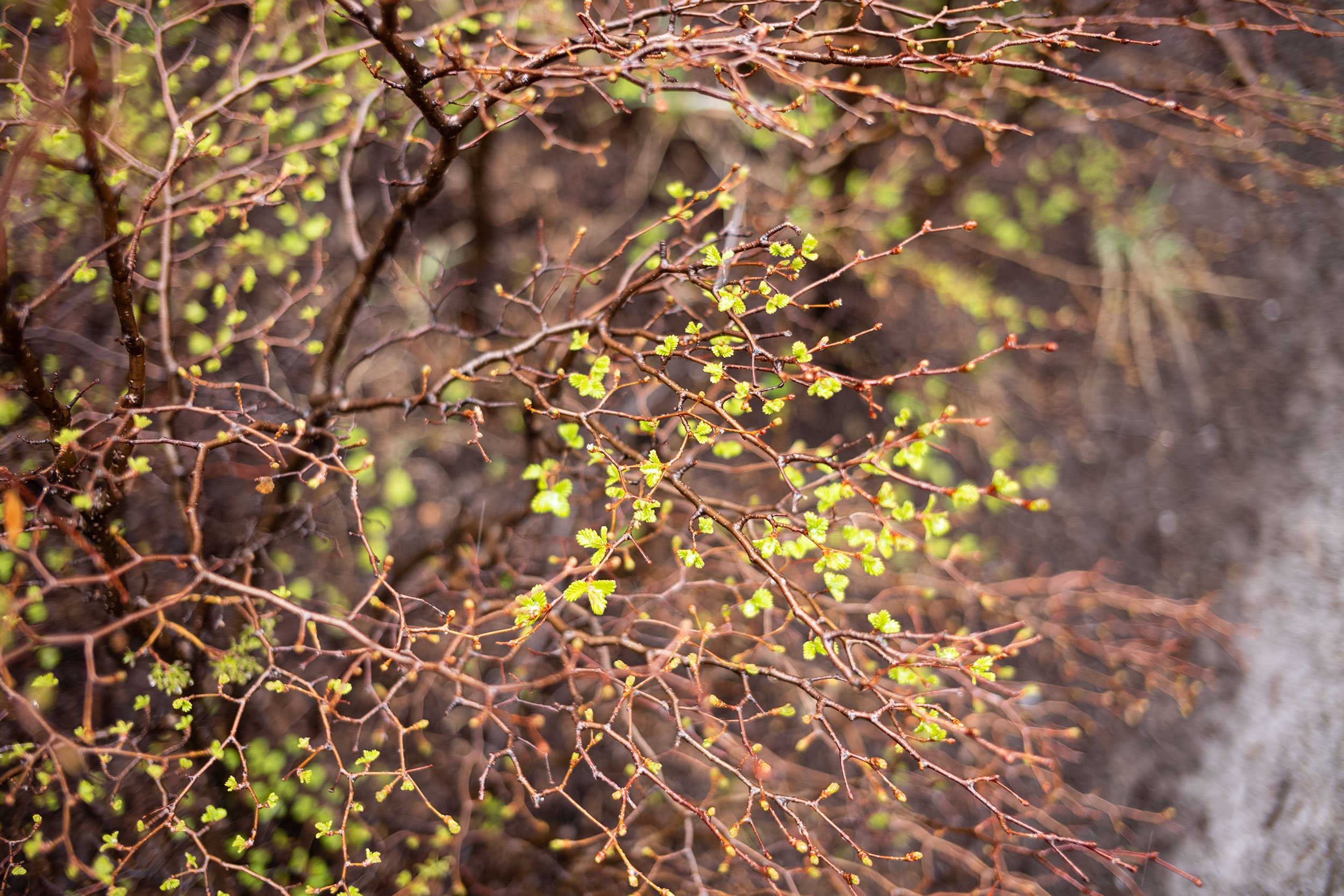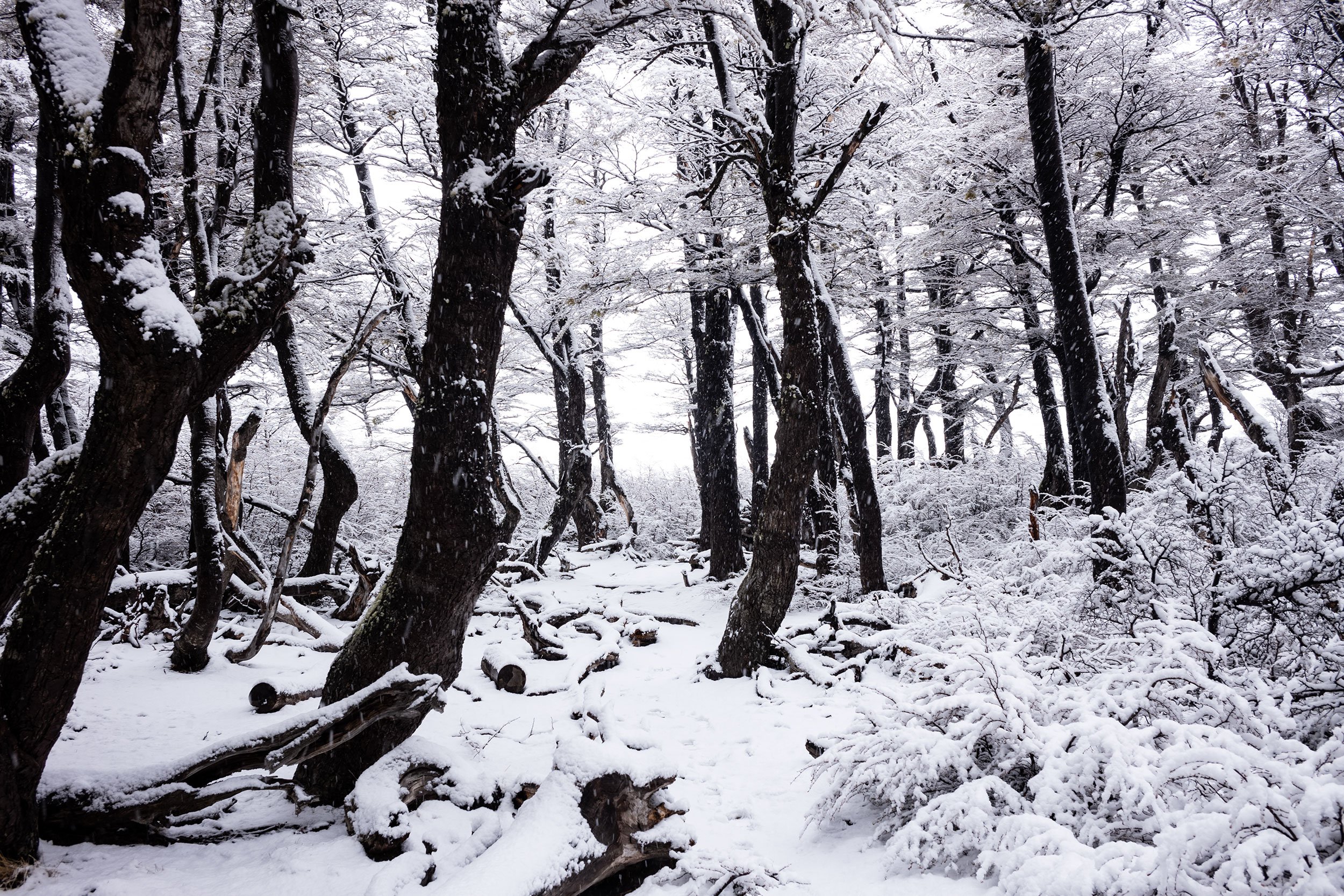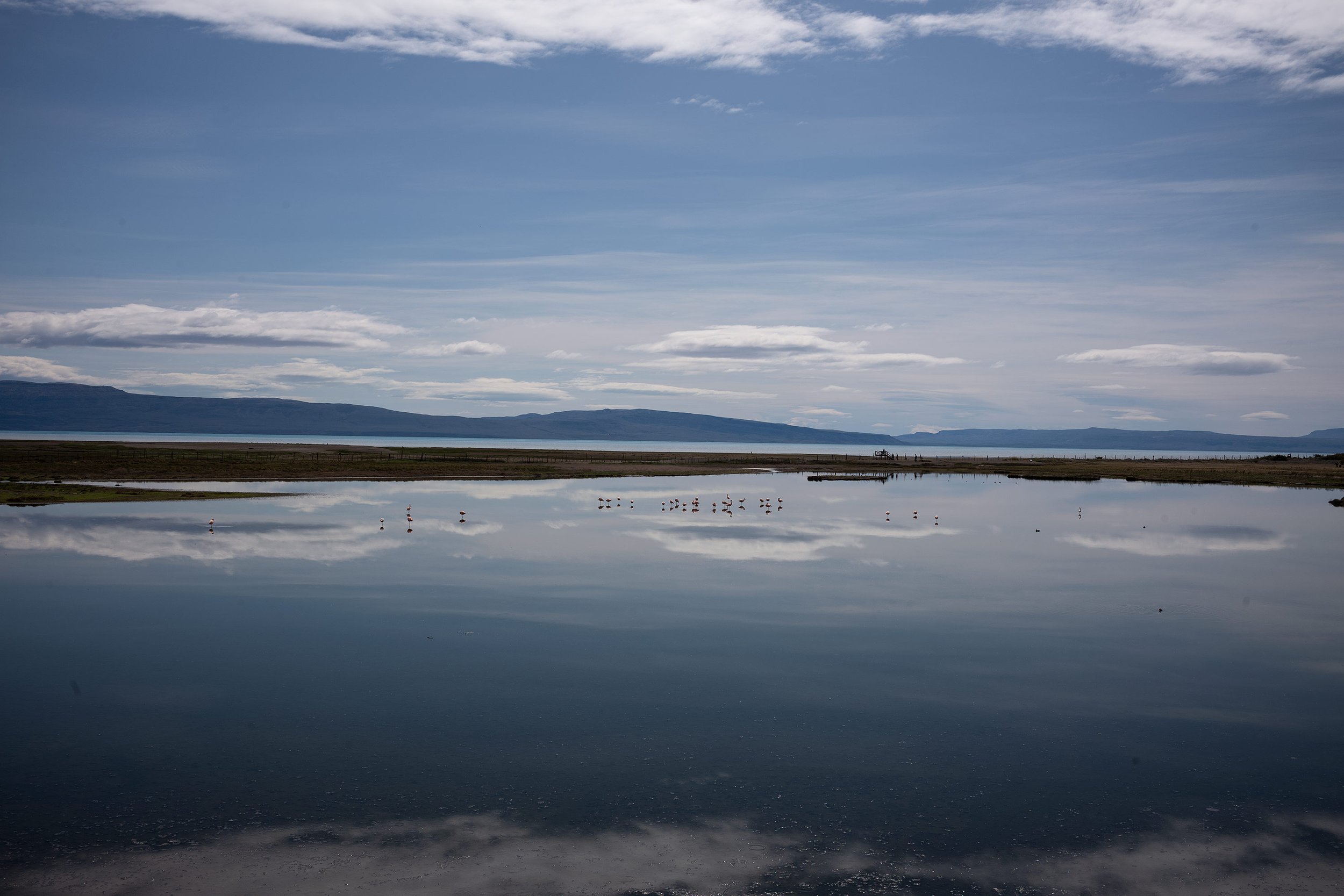
Patagonia: Chapter five
Three days around El Chalten with Juan, days 1 & 2.
Day one: Transfer from El Calafate and a hike to Laguna Torre.
Alejandro and Jorge pick me up from the hotel at 08:00 to transfer me to El Chalten. He tells me a guide will be waiting for me there at 11:00 for my hike. I didn’t think I had anything on the itinerary and am pleasantly surprised to find that there will be an activity, even though I had somewhat been looking forward to an easy day.
Alejandro makes sure I have a lunch box with me and then asks me what I had done. When I mentioned that I had kayaked the La Leona river he says ah. Then I have already seen the one stop for the day, a rest stop by the river where he and Jorge will have breakfast.
I ask him if it would be possible to stop by town to pick up alfajores on my way back to the airport on Saturday. He says he will check but that there is a family-run alfajores shop in Chalten. I ask him if they had Calafate alfajores. He doesn’t know but it doesn’t matter. The idea of supporting a local business is too attractive an idea and I forget about returning to Koonk. It turns out that Chalteños makes the superior alfajores.


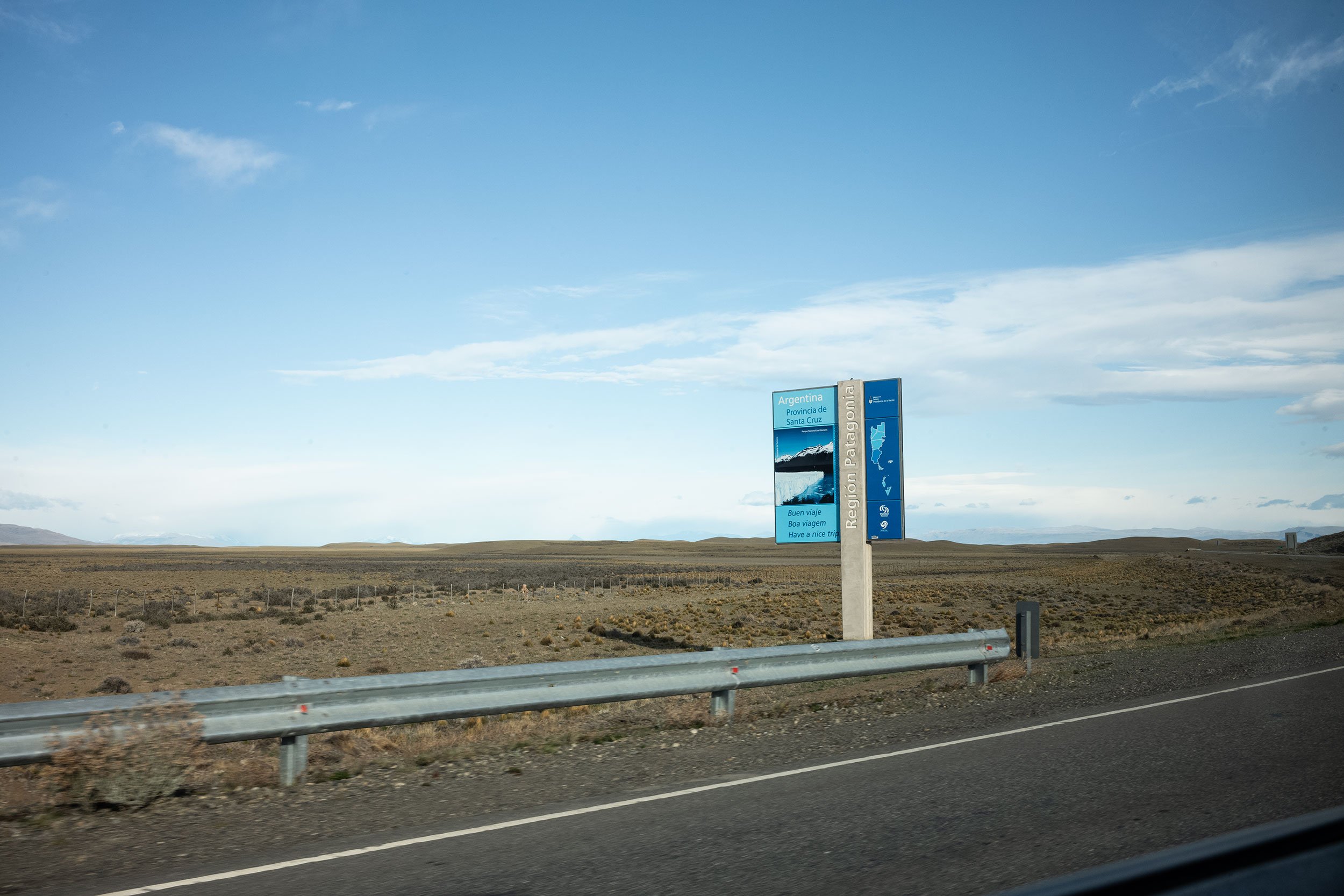




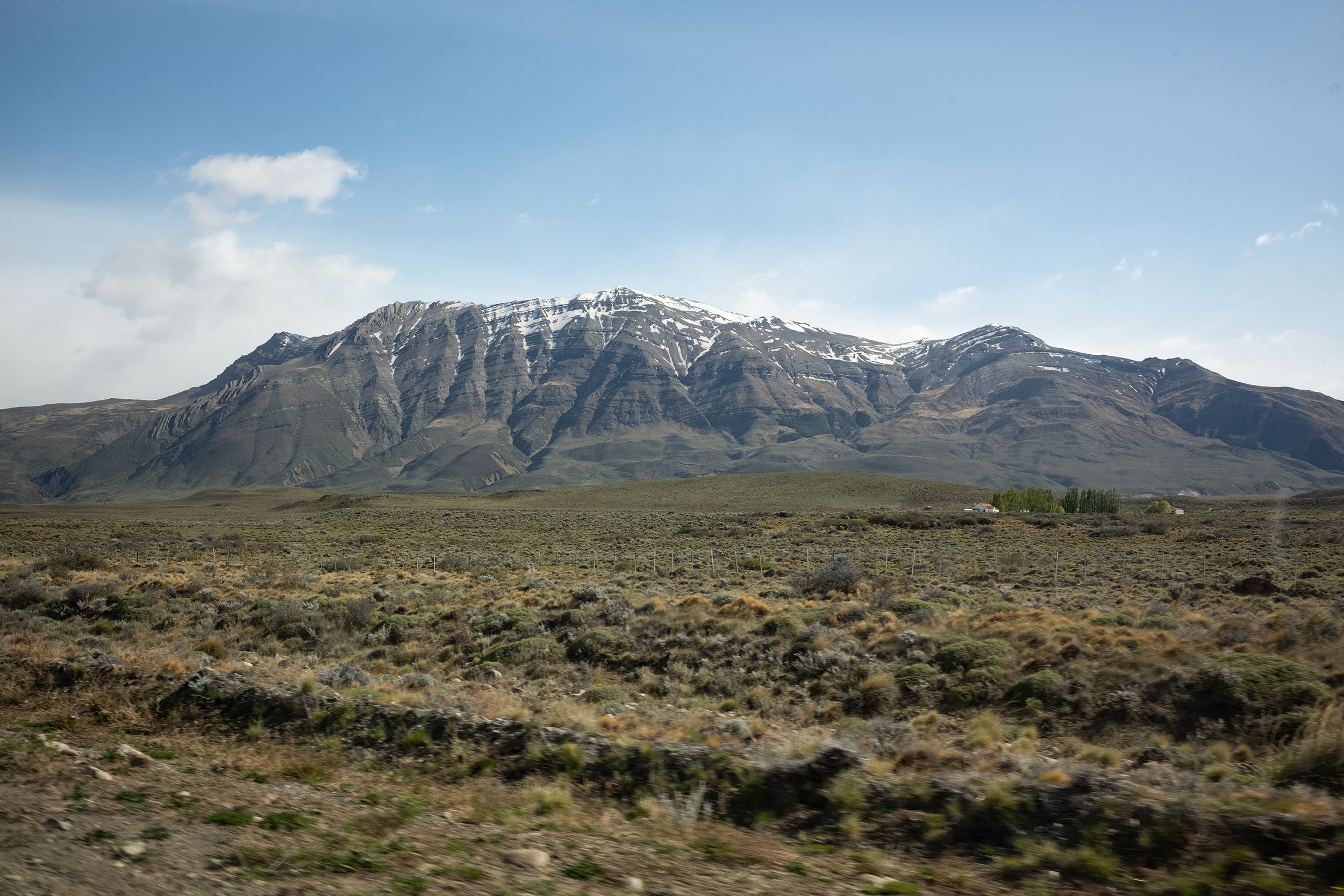
We arrive close to 11:00. Melba checks me in and tells me I have a lunch box for the next day. She shows me the options and I chose a vegetarian falafel wrap. She tells me my room isn’t ready yet and shows me to a closet where I can keep my bags. She’s from Buenos Aires, in El Chalten for 7 months, the season. She’s studying tourism at university, on her third year out of five. Afterwards, she thinks she wants to work overseas.
Juan arrives at 11:45 and briefs me on the area and the local hikes. There are three classic hikes: the one to Laguna Torre, the one to Fitz Roy, and the Lomo del Pliegue Tumbado with its sweeping views from the summit. What we end up doing will depend on the weather, and the weather doesn’t look good. He has planned Lomo del Pliegue for Friday as it seems to be the best opportunity to see the views, but it is raining today and will rain harder tomorrow so we will see.
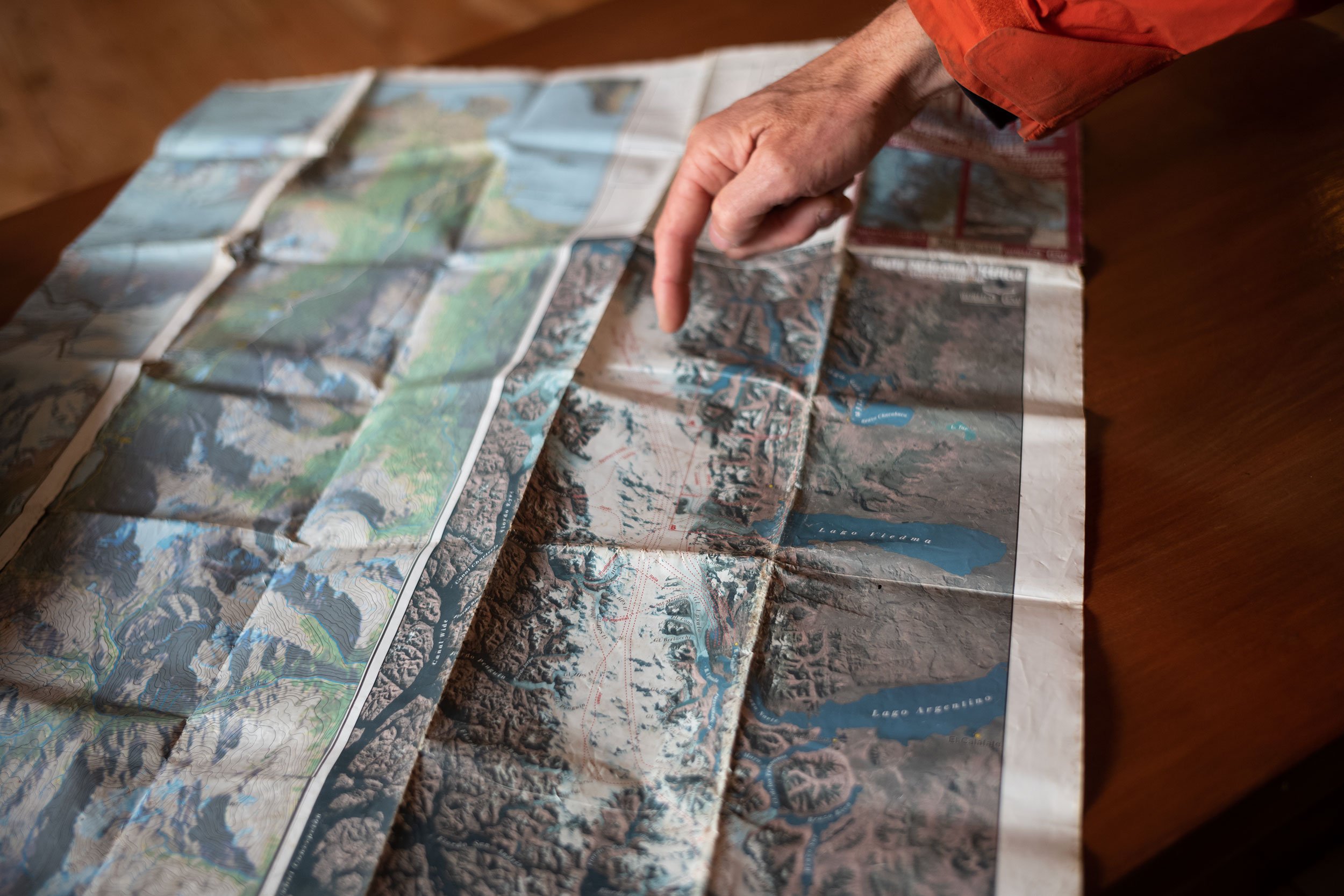
Briefing over, he asks me if I am ready to go. He’s a little surprised that the agency has scheduled a hike so late in the day, but feels optimistic. I nod and we leave the hotel, heading up and out of town. On this side of the mountains it is sunny and breezy, but as we climb up towards the saddle beyond which lies the valley that holds the lagoon we can see that the weather is dramatically different on the other side.
I ask Juan if it our hike is a there and back or a loop. Crossing one intersecting path he tells me that we can follow another path back to Chalten for a change of scenery.
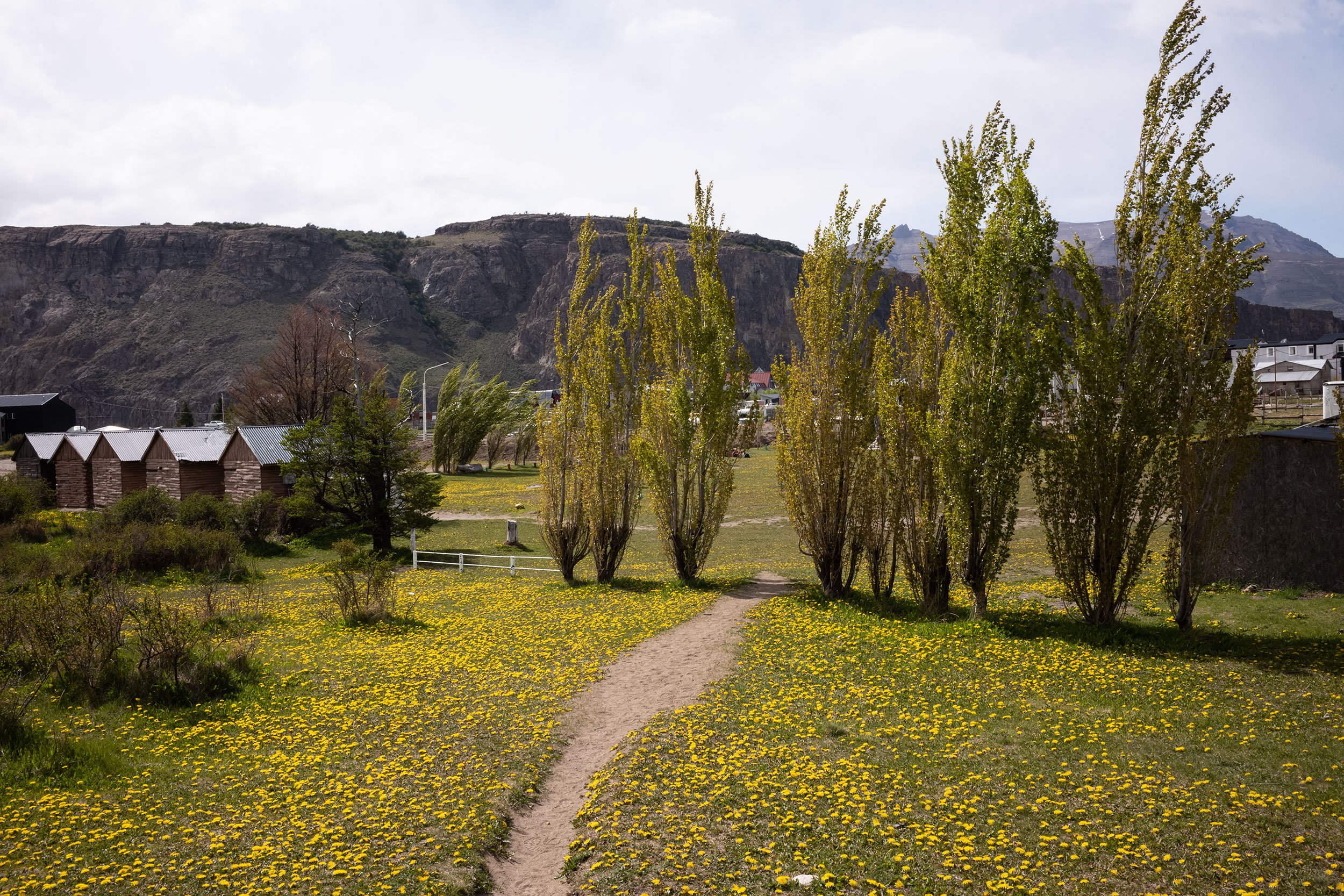


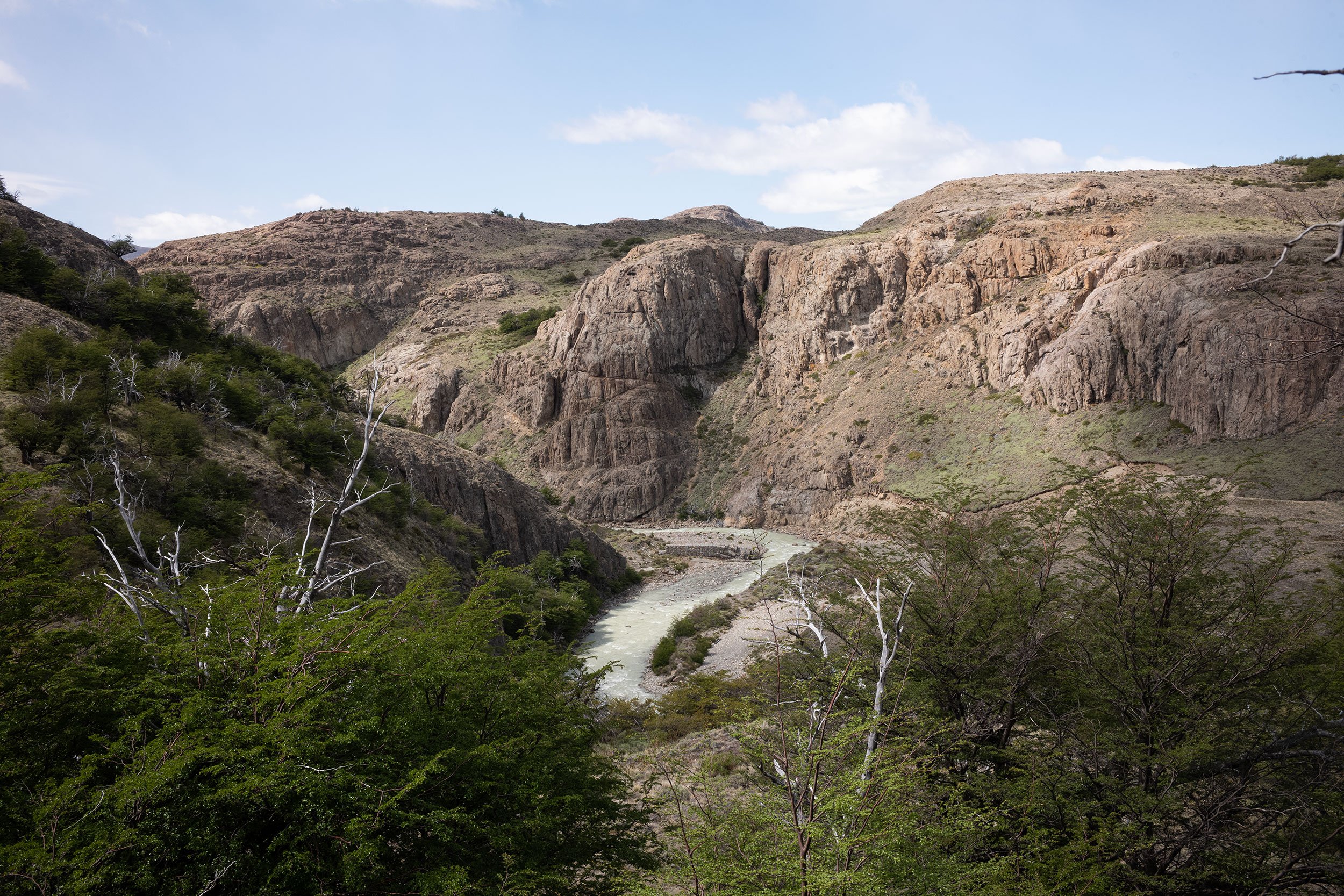



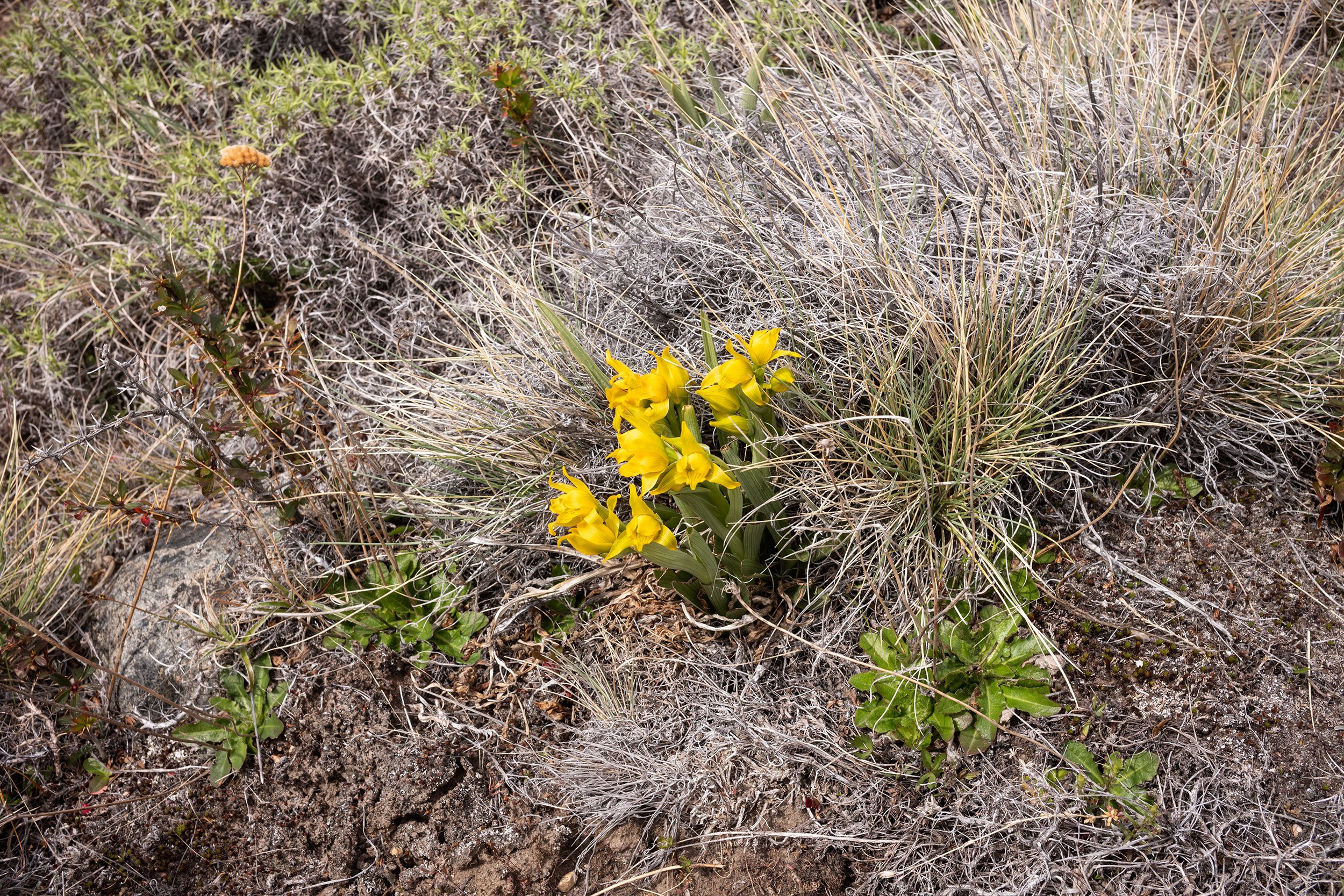
As we approach the top, a woodpecker flies out of the forest to our right. She stands for a bit before hopping around a tree stump, pecking at the bark. Further on Juan excitedly points out yellow orchids growing up the side of the hill. They flower for two weeks before drying out and he is happy to have been able to show me. Just for you he says. Later, as we pass another guide he tells him about the orchids and the woodpecker so that he can show his guests.
We stop for lunch when we reach the saddle. From the view point we can see the glacier in the distance, the ice glowing under what light can reach its surface. An Ecuadorian hiker we had met on the trail expresses some concern about going on. He’s considering turning back. A light rain falls and the peaks are shrouded with clouds. Juan tells him the path is well-trod and that there are plenty of people ahead. As a small group walks past us the Ecuadorian scurries off to join them.
We finish eating, don our windbreakers, and follow.

The light rain falls steadily but I am warm in my layers. We descend through the forest and through plains covered with shrubs. A forest of trees with bare trunks and branches stands in a depression between the mountains and Juan explains that a fire had taken their leaves and left their limbs white. He dubs it the silver forest. We walk on.
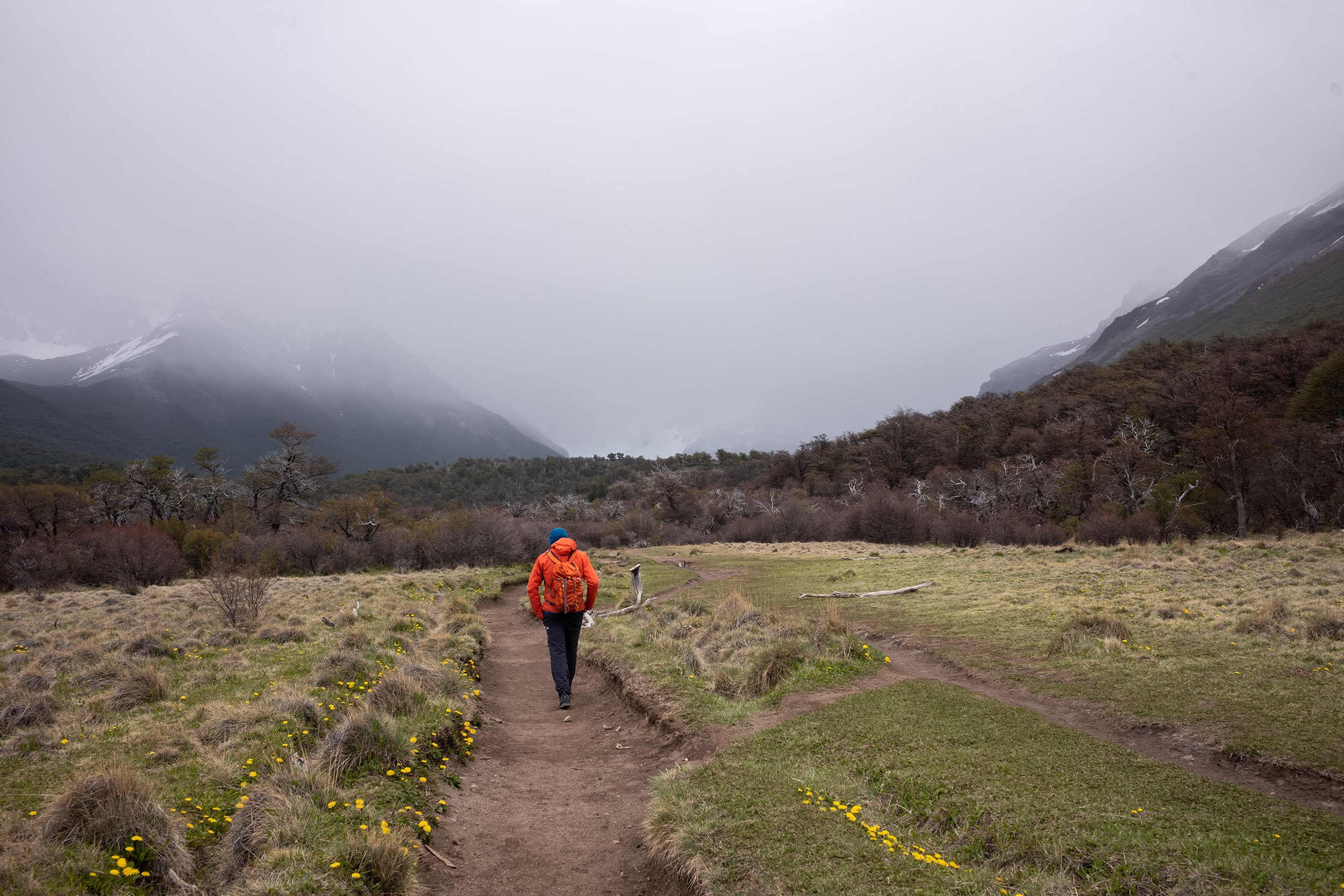
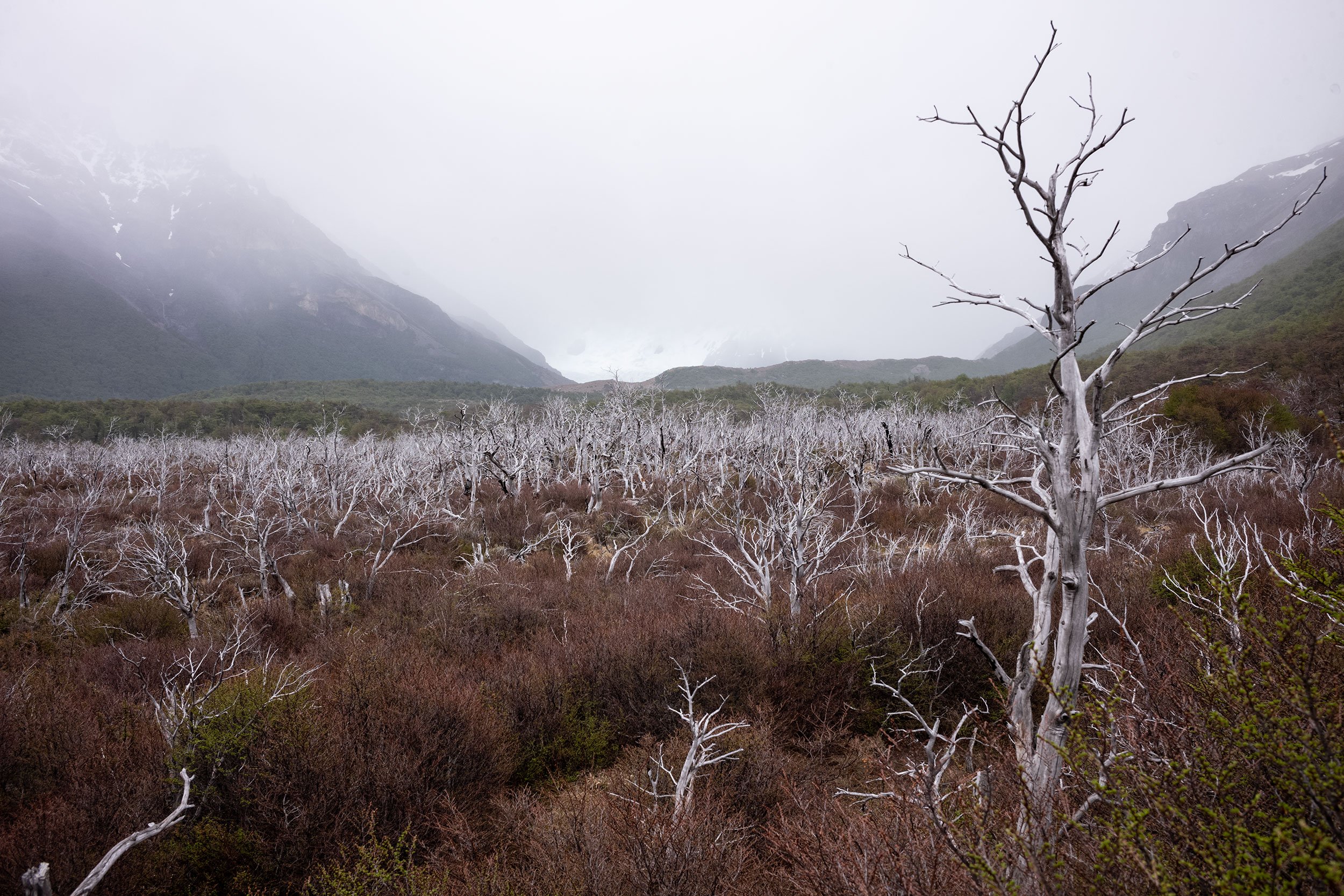


At the lagoon a few small groups stand around the shore. I walk down to take some photos. Returning to the slopes around the lagoon I find Juan sitting on a small rise under an umbrella. I join him and we sit and look out over the lagoon, the icebergs caught within it, and the glacier that looms on the opposite bank. Juan tells me he used to lead ice treks on the glacier and points out the route along the scree to the left and over the glacier into a valley on the right.
He asks if I did the mini ice trek on Perito Moreno. I tell him I did and he tells me that that is where he got his start as a guide. He says it was the golden era. He would live at the camp during the summer for two weeks and then have a holiday in Calafate before going back for two weeks. Back then the road was rough and it didn’t make sense to travel back and forth daily. There were only seven guides and they became a family, playing football in the afternoons and trekking in the mornings.
He also used to lead multi-day treks on the ice. He tells me the pack was incredibly heavy as you had to carry your food, stove, tent, sleeping bag, and crampons. I ask how they determined if someone was fit enough for that. He says they’d ask general questions about their activity levels. He also says you had to be motivated. I’m not that motivated, I tell him. Me neither he says. He stopped doing it ten years ago.

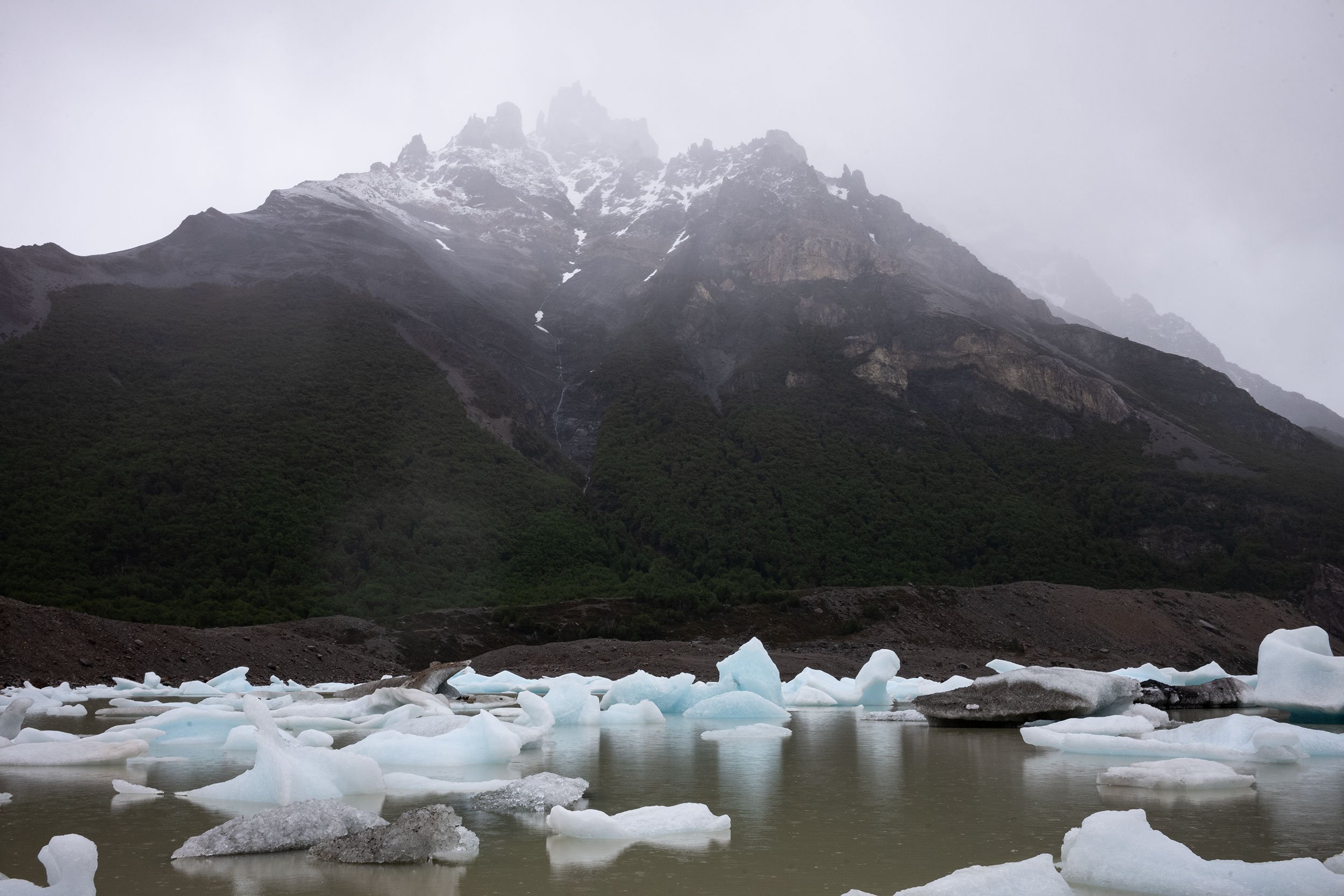

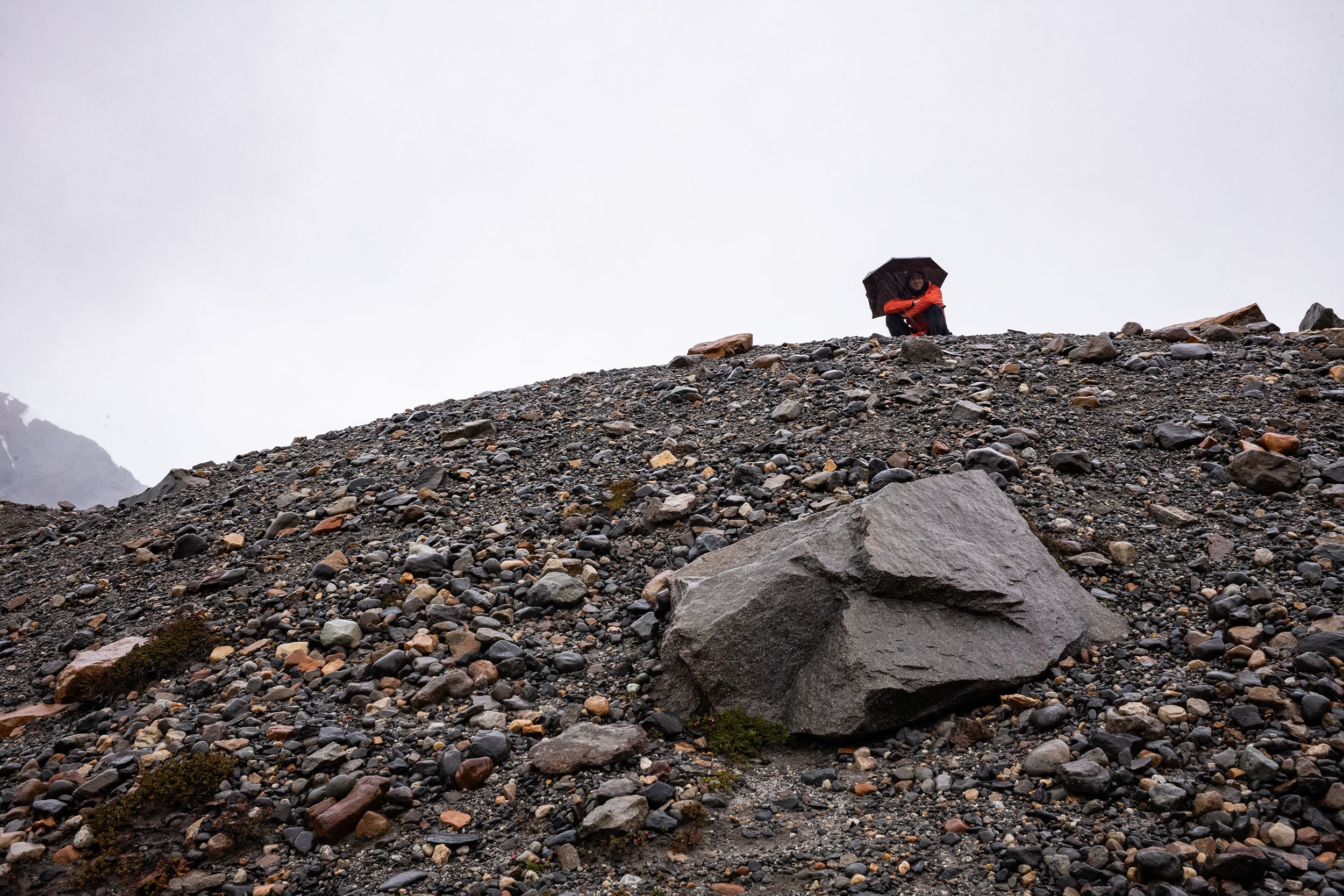

We sit for a bit before heading back. He asks me if I want to see the campground and he leads me to a wooded area with soft ground. He said before the internet and weather reports climbers might spend months camping here waiting for good weather to perform their climbs.
I ask him if the trail is open 24/7 and he says yes. It must be amazing doing the hike under a full moon. You don’t need a headlamp, he says. The glacier is magical under the moonlight. He says he’s been fortunate enough to climb under a full moon. There’s nothing like it.

As we walk I ask Juan about our hike on Friday and when we might get back. I want to book a massage for my last day. He asks if it’s included with the hotel. I wish. I’d be getting them every day! Juan laughs.
You walk fast he says. He estimates a time we’d return. I tell him I think it’s less tiring to walk fast than to walk slow. He concurs. Though I don’t think I’ll be walking so fast on our next hikes as the elevation gain becomes more challenging.
We see our Ecuadorian friend making his way back ahead of us, but before we catch up with him Juan leads me another way. He tells me this is an old access path. Horses would take this and help carry equipment for climbers. For a time there were also horse treks, but they cause more erosion and it wasn’t safe to have them with the increased number of tourists hiking the route and so they were banned.



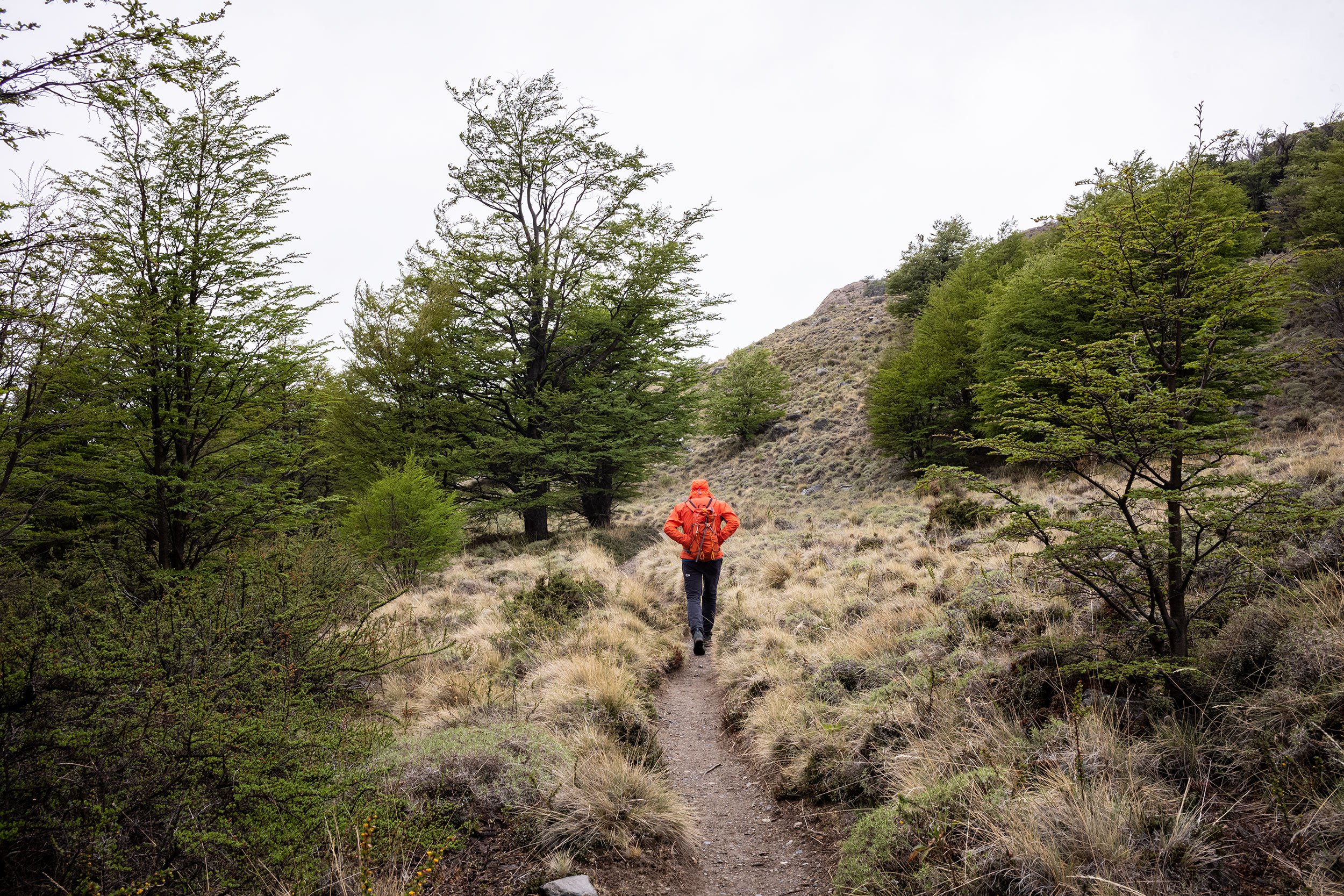
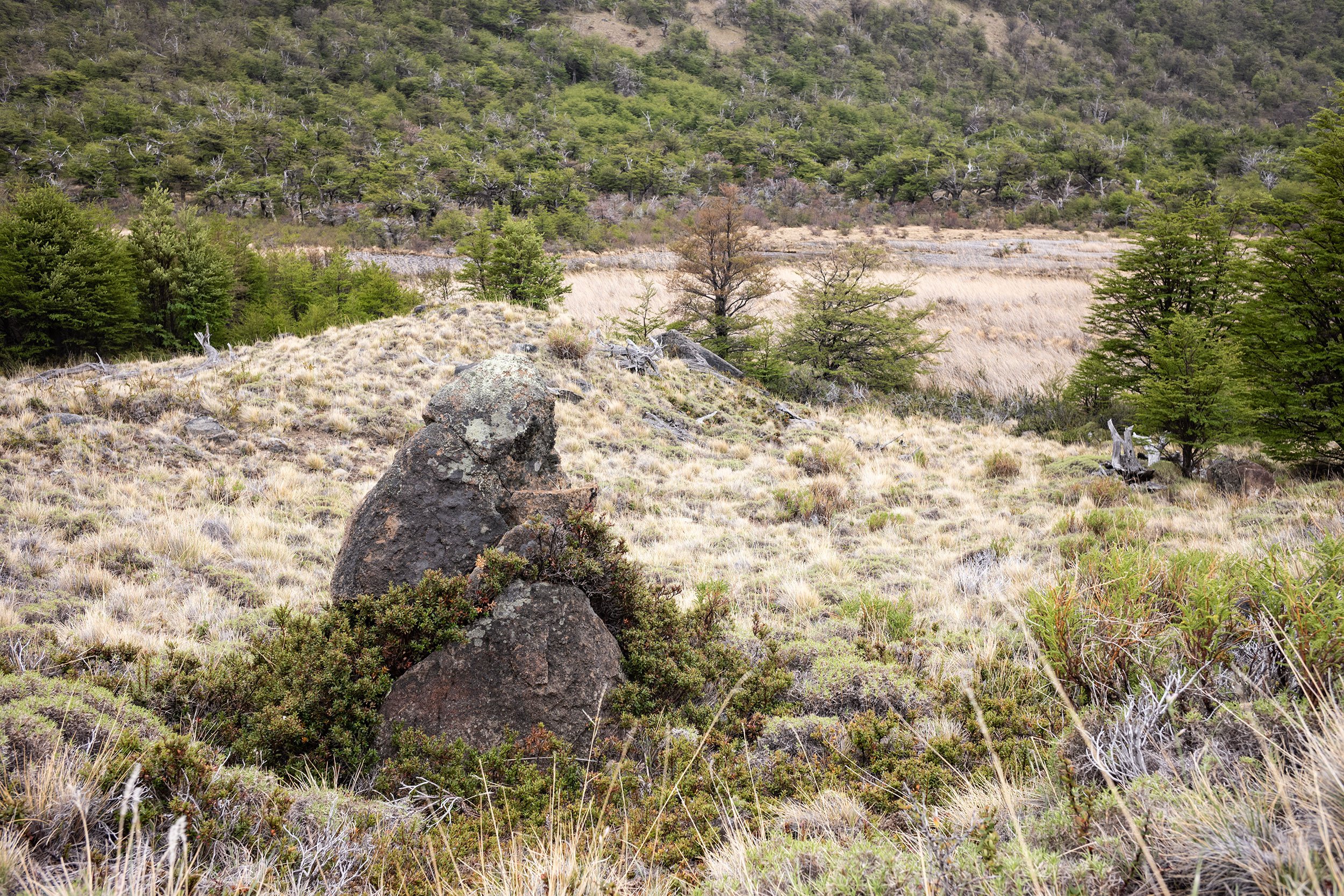
As we near the village he pointed out the first settlement in Chalten. A Danish man had set up a sheep farm in a low area at the base of a free-standing hill. Back then it took him three months to take the wool to the Atlantic and three months to bring back supplies for the winter. A hard life.
At the hotel I ask Juan if he wanted to get a drink. He declines. He asks what time I want to start. I tell him he’s the boss. We usually start at 8, he says. 8 is perfect I tell him. I ask for his WhatsApp in case anything changes and he says that’s a good idea. He’ll check the weather in the morning and, depending on the rain, maybe we’d start an hour later. I thank him and walk into the warm embrace of the hotel lobby.

Day two: Loma del Pliegue Tumbado.
Juan is already in the lobby by the time I come down to meet him at 08:00. Ready to get wet? I ask. It’s not so bad I think he says. He’s wearing waterproof hiking pants and a waterproof shell. Okay I say. Shall we go? Vamanos.
We walk south through the town. He tells me he has two children, 11 and 5, both in school. Today is a holiday however, marking the death of Nestor, the former president of Argentina and Cristina’s husband and so they are off. I don’t ask him about politics.
His wife is an English teacher and runs a bookstore in town. He points it out as we pass it, close to the school and hospital and gym. Everything is close to everything in the center of town. El Chalten is not big, though it’s expanding.
I ask about school. It’s free he says but you have to do more. Thanks to his wife his kids are learning English but he also has them taking piano. You have to keep them busy.
He built his own house. It took him three years. I ask if he had done it before. Yes. He has a piece of land in the north and built a house there. He also helped a friend build a house here in Chalten before building his own. He said his brother was very helpful. He’s a good carpenter.
As we reach the end of town we cross the river we had followed the day before and then turn off the road. We pass an administrative building and head into the hills.

A plaque marks the paths in the area and Juan traces the one we are to take. It had been raining steadily and he says it we were lucky we might make it the 8km to the Mirador Pliegue Tumbado. We’ll have to see how the conditions are. Past that the trail is too exposed. For the hike we’re about to do, we’ll be mostly protected by the brush and the forest.
The path inclines almost the entire time as we walk through low brush and forests, crossing the occasional grassy plain. Here and there we see fresh dung. Puma, Juan says. Must be close. But we never see them.
We hear birds chirping as we walk. The birds are happy, Juan says. Maybe the rain will stop. It doesn’t.
As we climb the rain turns to hail and then snow. A light dusting turned to decent coverage. As we near the end of the forest it has begun to snow in earnest and the trial is covered by it. We cross a snow field to a copse of trees and Juan finds a sheltered place with some exposed roots upon which we can sit. I think we summit here, he says.
We unpack our lunches and eat amidst the falling snow. It’s a tranquil place; a place for contemplation. If you have troubles you come here and soon they are no more.

It’s getting colder and wet even where we sit sheltered by the trees. The snow is falling hard and Juan suggests we start on our way back.
We cross the snow field and make a decent pace on our descent. The snow gives way to flurries and then back to rain. Juan asks me if my hands are cold. They had been as I tried to take photos, the metal camera body sucking the heat from my hands, but once we started walking my extremities warmed quickly.
Once out of the snow line I pause to relieve myself. Turning around Juan is nowhere to be seen. I assume he has walked on and continue a quick pace downward.
I pause upon hearing a woodpecker call and stop to see where it might be. I am rewarded with a family, a young male and two females, all searching the same tree, pecking at the bark, in search of food. Juan surprises me as he comes walking down the trail. How did I get in front of you? I had also stopped to use the bathroom he tells me.
We continue on through the forest and the rain. Soon we see the town in the distance, but it is still a ways away. As we descend the town disappears around a bend and we don’t see it again until we are almost at the end of the trail. Now it’s a race to a hot shower he says. I tell him my pants probably weigh twice as much as they usually did what with the amount of water they had soaked up.
Walking back north through town Juan points out an ice cream shop. Good ice cream, he says. Do you want some? No, he says. But I do. We see a woman through the window sweeping up. She waves her hand. The store is closed.
Passing Chalteños I hope to pick up some alfajores to bring back to Buenos Aires and to California as gifts but that, too, is closed.
Back at the hotel I ask Juan if he wants a coffee. He declines. He wants out of his wet clothes. Tomorrow we can have a beer he says. I tell him I look forward to it. Tomorrow I think we can start again at 8am? I tell him I look forward to it. 🇦🇷






